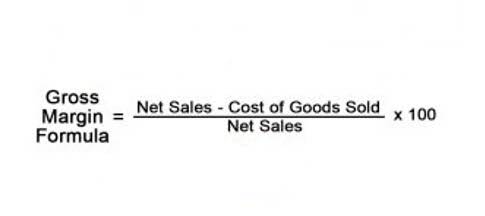
This misalignment can distort net income, leading to inaccurate financial statements. Consequences may include stakeholder misinformation, audit https://bodenbelaege-roteco.de/future-value-fv-of-a-single-amount-definition-3/ adjustments, or noncompliance with GAAP. The matching principle requires that revenues and any related expenses be recognized together in the same reporting period.
Accounting for the Matching Principle
Fiscal year means the accounting period for which annual financial statements are regularly prepared, generally a period of 12 months, 52 weeks, or 53 weeks. the cost principle Estimating costs means the process of forecasting a future result in terms of cost, based upon information available at the time. Compensation for personal services means all remuneration paid currently or accrued, in whatever form and whether paid immediately or deferred, for services rendered by employees to the contractor.
Definition of Accounting Principles, Assumptions, and Concepts
According to the cost principle, this machinery will be recorded on the balance sheet at $100,000, regardless of whether its market value increases to $120,000 or decreases to $80,000. This approach avoids the fluctuations and uncertainties of market-based valuations, providing adjusting entries a stable and predictable measure for users of financial statements. From an accountant’s perspective, historical cost offers reliability since it is based on actual transactions.
Asset Depreciation

Marketable securities are often held, waiting to be sold at the right moment. This allows for an accurate representation of the worth of the company’s assets. When you’re looking to predict cash flow for your business, the amount of money to be made from selling assets is important. Depreciation is the exact opposite of appreciation, and most assets undergo it. When you’re starting to dive into accounting, you’ll come across an entire glossary of terms. Some of the familiar terms may have accounting-specific definitions, as well.
It helps businesses assess their financial performance over time – Advantages of Historical Cost Principle
- Other methods that can be used are the fair market value, as well as the asset impairment method.
- However, the cost principle’s emphasis on historical cost can sometimes obscure the true economic value of a company’s assets.
- The historical cost principle does not adjust asset values based on currency fluctuations, so the property would still be reported as the original purchase price.
- Businesses that adhere to this principle can navigate the complexities of financial reporting with greater ease and assurance.
- Additionally, it facilitates the preparation of accurate financial statements and reflects the business’s financial position.
- ✅ Accrual accounting offers a more accurate financial performance overview by aligning revenues and expenses with the period they are earned or incurred.
This approach provides a clear and consistent valuation method that is relatively straightforward to apply and verify. It reflects the actual cash or cash equivalents paid, which offers a degree of reliability and objectivity. However, it may not always provide a true representation of an asset’s current value, especially if the market conditions have changed significantly since the purchase. The Cost Principle is a crucial accounting convention that ensures businesses record their assets at the cost incurred during their acquisition.

- The analysis could reveal that, while the upfront cost is high, the machine will pay for itself in two years through increased production and reduced labor costs.
- These will need to account for the multifaceted nature of value in a modern economy, blending traditional methods with new insights and technologies to better capture the true worth of assets.
- The below areas are some of the benefits of using the cost principle for your business.
- Similarly, certain assets like technology or machinery might depreciate or become obsolete over time, but the cost principle doesn’t account for these changes.
- Over the last five years, the Brazilian currency has been in double-digit inflation and the investment is not worth nearly what Bill paid for it.
- In practice, this means that businesses must be diligent in tracking expenses, valuing assets, and managing resources efficiently.
- Despite these developments, the historical cost principle remains relevant and valuable in certain situations, particularly for non-current assets such as property, plant, and equipment.
The historical cost concept implies that since the business is not going to sell its assets as such, there is little point in revaluing assets to reflect current values. In addition, for practical reasons, the accountant prefers the reporting of actual costs to market values which are difficult to verify. This consistency is important because it allows investors and analysts to compare financial statements across different periods and companies. Historical cost accounting also ensures that financial statements are objective, verifiable, and reliable, providing investors and analysts with a transparent view of the company’s financial position. The historical cost principle is also applied in the valuation of inventory.

Costs of idle facilities or idle capacity means costs such as maintenance, repair, housing, rent, and other related costs; e.g., property taxes, insurance, and depreciation. A participant whose employment status with the employer has not been terminated is an active participant of the employer’s pension plan. Normal cost means the annual cost attributable, under the actuarial cost method in use, to current and future years as of a particular valuation date excluding any payment in respect of an unfunded actuarial liability. Indirect cost pools means (except for subparts 31.3 and 31.6) groupings of incurred costs identified with two or more cost objectives but not identified specifically with any final cost objective.
- The cost principle is a foundational concept in accounting that dictates that all assets and services purchased by a business should be recorded at their original cost, rather than their current market value.
- While there may be changes in the future of accounting, the historical cost principle will continue to play a crucial role in the financial reporting of businesses.
- The concept provides a reliable and objective basis for measuring asset values, ensuring consistency and comparability in financial reporting.
- It is used by companies of all sizes to report their financial position to stakeholders, including investors, lenders, and regulatory bodies.
For example, consider a manufacturing company with a book value of machinery at $5 million, based on historical cost and depreciation. If the current market value of similar machinery is $7 million, an asset-based valuation would adjust the value of the machinery upwards in the company’s valuation. When using other methods of accounting, like fair market value, cost verifications can be harder to provide. If you’re trying to prove the value of an item or a cost using fair market value, substantial work is involved. This can include current value for similar items, inspection on the wear and tear, and a professional appreciation.

Conclusion and Future of Cost Principle in Accounting
The cost principle means that a long-term asset purchased for the cash amount of $50,000 will be recorded at $50,000. If the same asset was purchased for a down payment of $20,000 and a formal promise to pay $30,000 within a reasonable period of time and with a reasonable interest rate, the asset will also be recorded at $50,000. While the cost principle has its limitations, particularly in times of significant inflation or deflation, it remains an essential tool for ensuring the long-term stability of a business. By providing a stable framework for financial reporting and decision-making, the cost principle helps businesses to navigate the complexities of financial management and maintain a steady course towards growth and profitability.



